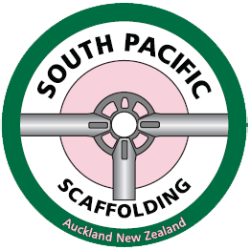It is estimated that around 70 people fall from ladders every week in New Zealand. Experienced scaffold professionals can help you safely reach places you may never have thought possible. They may also save you time and money.
Here we cover six common scaffolding uses:
-
Roofing repairs or replacements
-
Chimney installation, repairs, cleaning or removal
-
Interior and exterior painting and plastering
-
Concrete slabs
-
Sloped or uneven ground
-
Tight spaces or narrow scaffolding
Use 1: Roofing repairs or replacements
Scaffolding for roof work can be used for re-roofing, roof repairs, re-painting or replacing your spouting. Depending on the scope of work, budget and building type, there are a few different options.
It’s worth being aware that ACC requires that ANY roof work, large or small, must have roof-edge protection.
Different roofing scaffold types include:
-
Edge protection – a protective barrier attached under your soffit to a required minimum height of one metre or more above the roof. This is cheaper than frame scaffold because you don’t have to build from the ground up.
-
Staging – regular scaffold can be erected as a single-level stage or full roof enclosure for larger jobs.
-
Dummy lifts – installed up the sides of the buildings can enable you to easily and safely lift objects onto the roof without damage
Use 2: Scaffolding for chimney installation, repairs, cleaning or removal
The typical uses for scaffolding for chimneys can be for cleaning/sweeping, painting, repair, removal and inspection. It can mount over a roof peak to create an area that a person can safely stand on or be customised to provide a stable and comfortable work platform on any roof shape.
It is available in any configuration. For example:
-
Half scaffold provides access to one side of a chimney or full surround that completely encircles it.
-
As large or as small as needed depending on requirements and budget.
-
When used on tile or other fragile roof materials, it’s available with soft, padded collars and feet to mould carefully to any surface.
Use 3: Scaffolding for interior and exterior painting and plastering
Most people will be familiar with using scaffolding for painting, plastering, painting stairs or general construction. Scaffolding is used to safely reach high spaces on residential or commercial buildings where sustained access is required. It allows access to larger areas by creating a raised floor, increasing efficiency and making it safe.
A wide variety of painter’s scaffolding exists for different uses depending on access and building type:
-
Basic – a raised floor surface supported by a cage-like framework of horizontal and vertical metal tubes
-
Suspended – the entire structure can be suspended by bracing from the side of a building with little to no direct support to the ground
-
Portable – for projects that do not require great height, such as interior painting
-
Small-scale or large scale – ranging from single-person home improvement projects to larger construction projects that require access to difficult areas while supporting many workers
Use 4: Scaffolding for slabs
Falsework is a temporary scaffolding structure that supports the formwork used to create suspended concrete slabs.
The concrete is cast into the formwork. The falsework holds the formwork in situ until the concrete has cured. For example, if casting a floor slab for a second-storey building – the falsework would support formwork panels so the slab can be cast above ground.
Use 5: Scaffolding for sloped or uneven ground
Scaffolding can be adapted to create platforms for working over stairs, ramps, soft and sloped ground and almost all challenging surfaces. Correctly assembled, quality scaffolding can provide safe access to your work area using components such as adjustable legs, base plates or castors.
To safely and efficiently install scaffold equipment on uneven ground, people must:
-
Have access to the best quality equipment
-
Understand how best to install it
-
Utilise qualified and experienced installers
Scaffolding on uneven ground can increase the risk of falling if badly constructed; therefore, people are urged to contact us for professional assistance.
Use 6: Scaffolding in tight or narrow spaces
Narrow frame or ‘Baker Perry’ scaffold is one of the most popular forms of scaffold due to its mobility and versatility in tight spaces. It is ideal for those who need to change position at height frequently.
Narrow frame scaffold is a thinner scaffold (less than 3 feet wide). It is more easily constructed, moved and adjusted. Many contractors and homeowners use it instead of ladders to create a larger, more stable workspace.
Some of the benefits include:
-
Ideal for tight or narrow spaces, inside or out
-
Easily transported in an average-sized trailer
-
Constructed or deconstructed by almost anyone
-
Easily changeable working heights
-
Used for small jobs such as painting, gib installation, lifting heavy objects and plastering
-
It can also be adapted to sit on uneven ground
Call us for a free quote or to get your job started
Whether you’re planning a minor gutter repair or a large-scale build, South Pacific Scaffolding take the time to assess your job and offer you the safest and most efficient scaffolding solution.
Our experience and high-quality equipment make us best suited to solve all your scaffolding challenges.

